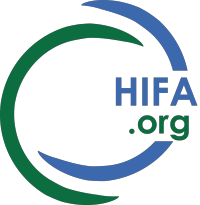This systematic review concludes that 'In East and South-East Asia, most governments used mobile health apps as adjuncts to public health measures for tracking COVID-19 cases and delivering credible information. In addition, these apps have evolved by expanding their functions for COVID-19 vaccination.' Such apps are mainly used by the public and might best be categorised as formal and top-down, in contrast to the current emphasis in our discussion on informal use of mobile phones by health workers (whereby health workers use phones in ways that are not specifically directed by their employer/authority).
Citation and abstract below. Full text: https://mhealth.jmir.org/2021/11/e32093/PDF
CITATION: Lee B, Ibrahim SA, Zhang T. Mobile apps leveraged in the COVID-19 pandemic in East and South-East Asia: Review and content analysis. JMIR Mhealth Uhealth. 2021;9(11):e32093
ABSTRACT
BACKGROUND: The COVID-19 pandemic increased attention to digital tools to support governmental public health policies in East and South-East Asia. Mobile apps related to the COVID-19 pandemic continue to emerge and evolve with a wide variety of characteristics and functions. However, there is a paucity of studies evaluating such apps in this region, with most of the available studies conducted in the early days of the pandemic.
OBJECTIVE: This study aimed to examine free apps developed or supported by governments in the East and South-East Asian region and highlight their key characteristics and functions. We also sought to interpret how the release dates of these apps were related to the commencement dates of other COVID-19 public health policies.
METHODS: We systematically searched for apps in Apple App Store and Google Play Store and analyzed the contents of eligible apps. Mobile apps released or updated with COVID-19-related functions between March 1 and May 7, 2021, in Singapore, Taiwan, South Korea, China (mainland), Japan, Thailand, Hong Kong, Vietnam, Malaysia, Indonesia, and the Philippines were included.
RESULTS: Of the 1943 mobile apps initially identified, 46 were eligible, with almost 70% of the apps being intended for the general public. Most apps were from Vietnam (n=9, 20%), followed by Malaysia, Singapore, and Thailand (n=6 each, 13%). Of note, most apps for quarantine monitoring (n=6, 13%) were mandatory for the target users or a population subset. The most common function was health monitoring (32/46, 70%), followed by raising public health awareness (19/46, 41%) through education and information dissemination. Other functions included monitoring quarantine (12/46, 26%), providing health resources (12/46, 26%)...
CONCLUSIONS: In East and South-East Asia, most governments used mobile health apps as adjuncts to public health measures for tracking COVID-19 cases and delivering credible information. In addition, these apps have evolved by expanding their functions for COVID-19 vaccination.
Neil Pakenham-Walsh, Global Coordinator HIFA, www.hifa.org neil@hifa.org
Global Healthcare Information Network: Working in official relations with WHO

